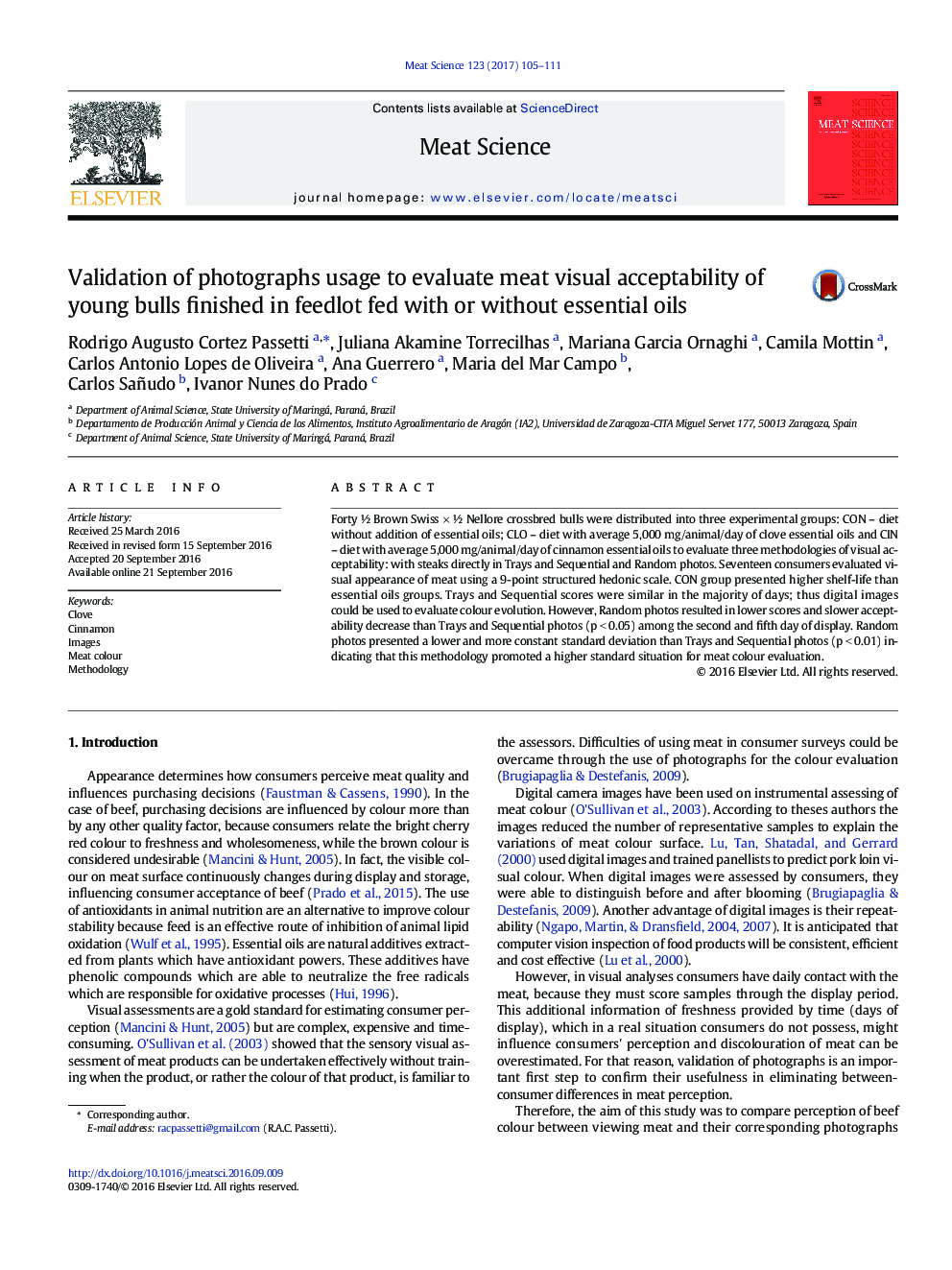| Article ID | Journal | Published Year | Pages | File Type |
|---|---|---|---|---|
| 8503288 | Meat Science | 2017 | 7 Pages |
Abstract
Forty ½ Brown Swiss Ã ½ Nellore crossbred bulls were distributed into three experimental groups: CON - diet without addition of essential oils; CLO - diet with average 5,000 mg/animal/day of clove essential oils and CIN - diet with average 5,000 mg/animal/day of cinnamon essential oils to evaluate three methodologies of visual acceptability: with steaks directly in Trays and Sequential and Random photos. Seventeen consumers evaluated visual appearance of meat using a 9-point structured hedonic scale. CON group presented higher shelf-life than essential oils groups. Trays and Sequential scores were similar in the majority of days; thus digital images could be used to evaluate colour evolution. However, Random photos resulted in lower scores and slower acceptability decrease than Trays and Sequential photos (p < 0.05) among the second and fifth day of display. Random photos presented a lower and more constant standard deviation than Trays and Sequential photos (p < 0.01) indicating that this methodology promoted a higher standard situation for meat colour evaluation.
Related Topics
Life Sciences
Agricultural and Biological Sciences
Food Science
Authors
Rodrigo Augusto Cortez Passetti, Juliana Akamine Torrecilhas, Mariana Garcia Ornaghi, Camila Mottin, Carlos Antonio Lopes de Oliveira, Ana Guerrero, Maria del Mar Campo, Carlos Sañudo, Ivanor Nunes do Prado,
